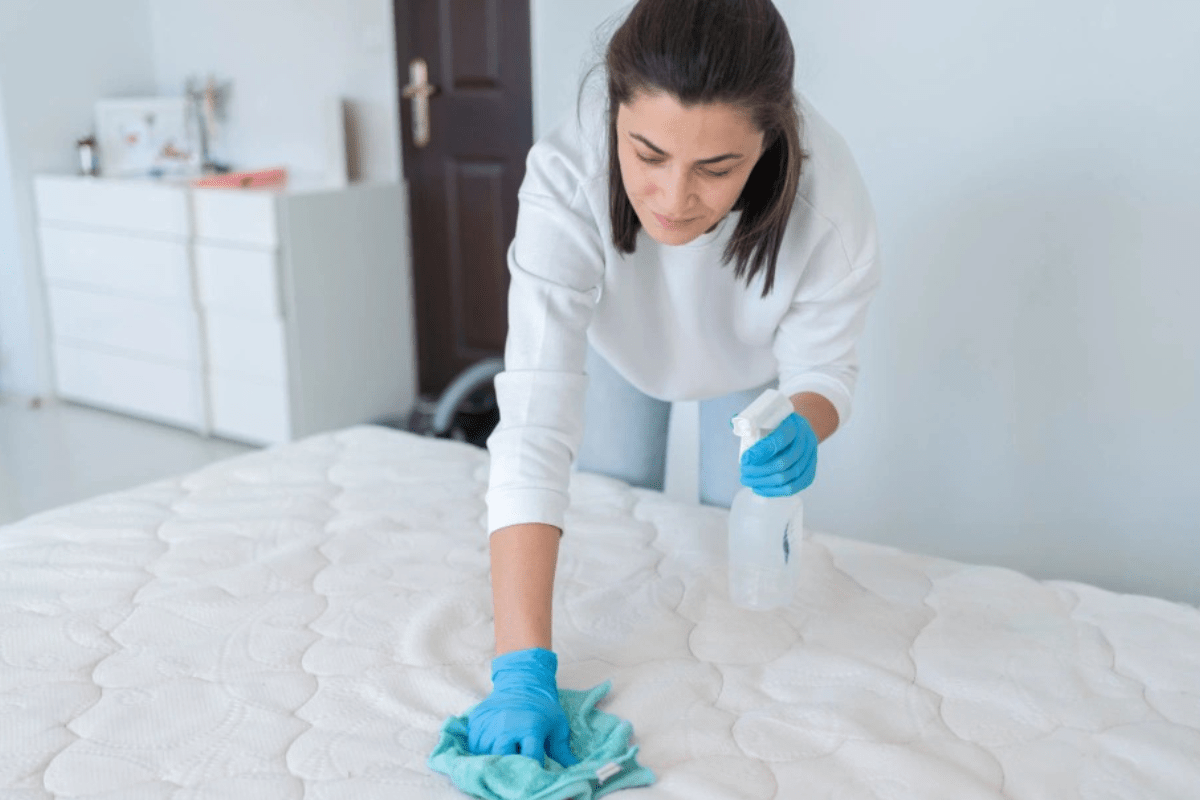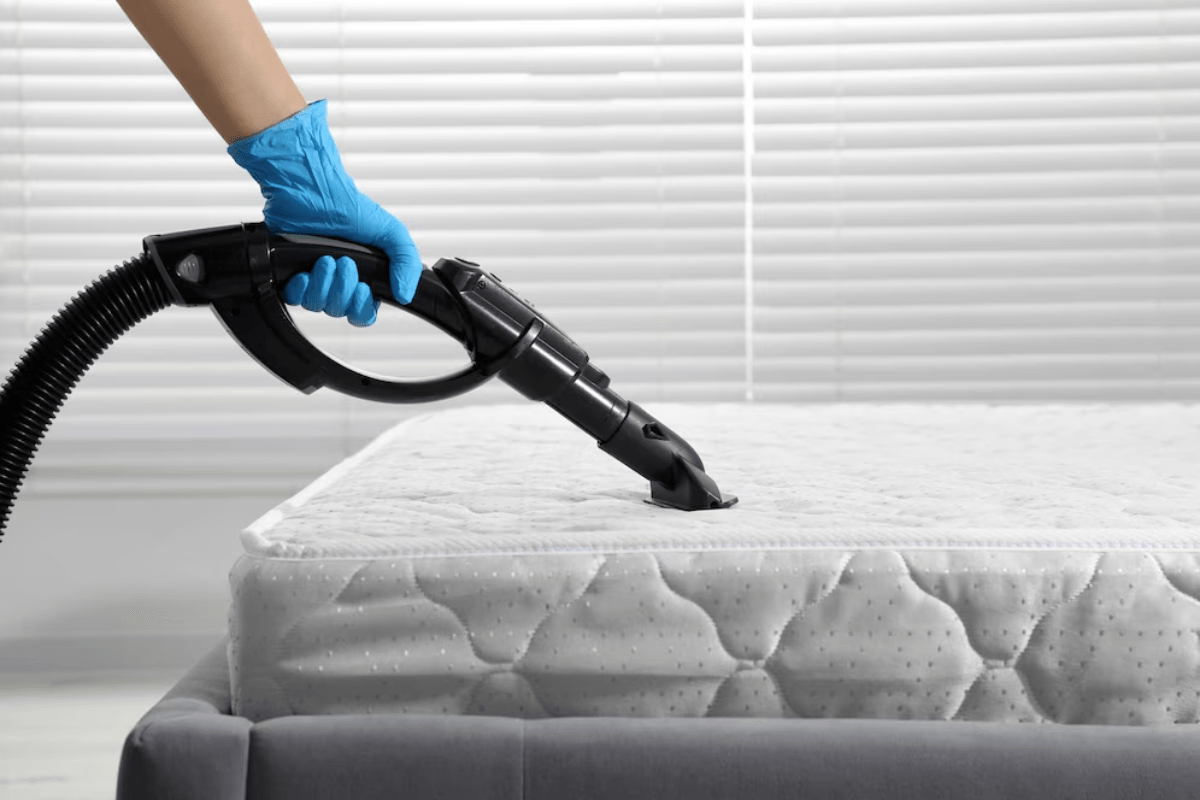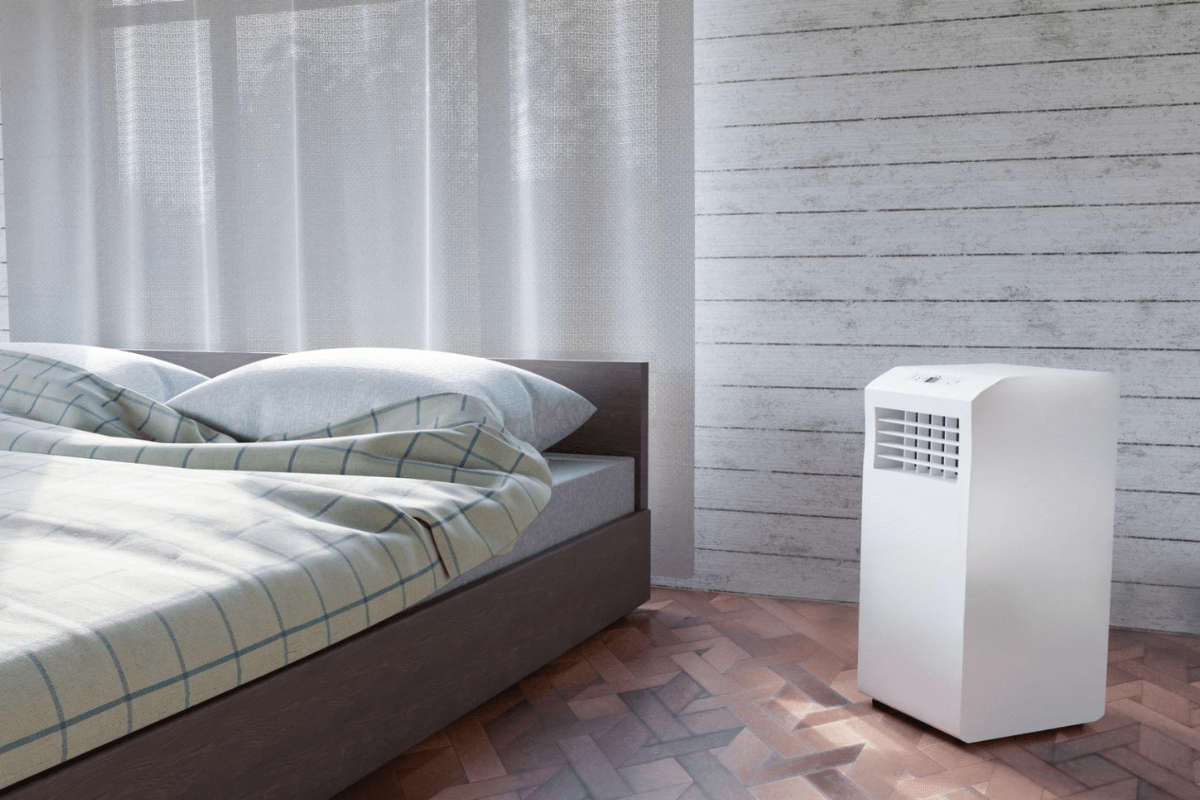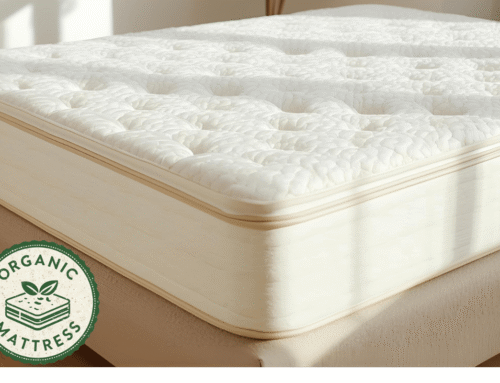Memory foam mattresses are comfortable, but they stain more easily than other types. Sweat, drinks, or pet accidents can sink into the foam and leave smells or marks. Many people think a stained mattress can’t be fixed, but that’s usually not true. You don’t need harsh chemicals to clean one. Baking soda, white vinegar, and mild soap are often enough. Some people also leave their mattress in the sun or a breezy spot to help remove odors.
This guide will show you how to clean both fresh and old stains. You’ll learn how to soak up spills, get rid of smells, and clean without drenching the foam. It’s also good to know the difference between memory foam and gel memory foam since they need slightly different care.
Key Takeaways
- Memory foam feels great but stains easily. Use gentle cleaners like baking soda and vinegar rather than soaking it with water.
- Always blot instead of scrubbing. Press lightly with a damp cloth to lift stains and prevent damage to the foam.
- Allow the mattress to air dry completely—fans, open windows, and good airflow work better than direct sunlight or heat.
- Regularly deodorize with baking soda to keep musty odors away, and add a few drops of essential oil for a fresh scent.
- Address spills immediately, vacuum monthly, and deep clean twice a year to keep your memory foam mattress fresh and long-lasting.

What Makes Memory Foam Challenging To Clean?
Memory foam is great for comfort, but it holds onto more than just your shape. It can soak up sweat, body oils, and even drink spills. Because it traps moisture, it can start to smell and become a breeding ground for bacteria or mildew. Getting it too wet can ruin it. If the foam is fully soaked, it takes a long time to dry and its structure can break down. It’s better to blot spills with a slightly damp cloth and let it air dry in a room with good airflow. Avoid scrubbing or soaking it.
For stains, a small amount of mild detergent or baking soda usually works. Stay away from strong cleaners or steamers. These can push moisture deeper into the foam and make the problem worse. Regular spot-cleaning and patience are key to keeping the mattress fresh.
If you take care of it, your memory foam mattress will last longer. Knowing how to clean it properly, deal with tough stains like urine, make it firmer or cooler, and fix any dips will help keep it comfortable for years.
How To Remove Blood Stains From Memory Foam
Blood stains on memory foam can be tricky because the foam soaks up liquid fast. If you use hot water, the blood can set in and become harder to remove. Cold water works better. Dampen a cloth with cold water and gently dab the stain. Don’t rub, or the stain might spread.
If the stain is stubborn, mix hydrogen peroxide and baking soda into a paste. Spread a thin layer over the spot and leave it for about 10 minutes. This helps break down the blood without damaging the foam. When time’s up, blot it with a clean cloth and then wipe with another cloth dampened in water to remove any leftover paste.
Let the foam dry all the way before using it again. If it stays damp, it can start to smell or even grow mold. Avoid scrubbing hard or using harsh chemicals because they can ruin the foam. These steps can help you clean the stain while keeping the foam in good shape.
Step-By-Step: How To Clean Memory Foam Mattress Stains
- Strip off all bedding. Sheets, protectors, and covers should be washed separately in warm water and mild detergent for a full refresh.
- Vacuum the surface. A handheld vacuum works best to pick up dust, hair, and any crumbs sitting on the foam’s surface.
- Spot treat the stains. A spray bottle with equal parts white vinegar and water is great. Lightly mist the stain and wait 5–10 minutes before moving on.
- Blot the area instead of scrubbing. A clean cloth should be used to dab gently, applying light pressure to lift the stain without damaging the foam.
- Deodorize with baking soda. A thin, even layer over the spot helps absorb any lingering odor. Some let it sit overnight for better results.
- Vacuum again to finish. Once the baking soda is completely dry, go over the area to remove the powder and any remaining residue.
Proper care after cleaning includes compressing a memory foam mattress and storing a memory foam mattress correctly to preserve its shape and longevity. Cleaning memory foam takes patience, but this process keeps the mattress fresh without harsh chemicals. Some prefer adding a mattress protector afterward to avoid repeating the steps too often.

How To Remove Sweat Stains From Mattress
Sweat stains sneak up gradually, which leaves behind yellow patches and a faint sour odor that’s hard to ignore. Most people don’t notice them until they strip the bed and spot the discoloration. Regular mattress protectors help, but they’re not always enough once the buildup sets in.
A mix of hydrogen peroxide, baking soda, and a little dish soap are great for many. Just a light spray across the stained area is enough. There’s no need to soak the mattress. The bubbling reaction usually starts right away, breaking up the stain on contact. After about ten minutes, blotting the spot with a clean towel lifts most of the residue. Some prefer to repeat the process for deeper stains, though one round does the job. The mattress should be left uncovered until fully dry to avoid trapping moisture underneath.
What NOT To Do When Cleaning Memory Foam
Bleach might seem like a strong cleaner, but it’s too harsh for memory foam. Instead of making it fresher, it can break down the material and leave a strong smell. Over time, this can change how the foam feels and works. Using too much water is another problem. If water soaks deep into the mattress, it can trap moisture. This makes it easy for mold or mildew to grow. Once the foam is wet inside, it’s very hard to dry it out completely.
Scrubbing too hard can also damage the foam. It wears down the structure and shortens the mattress’s life. A better way is to use a soft cloth, light pressure, and let a cleaner sit for a few minutes before blotting it away. Taking your time will clean it better and keep the foam in good shape longer.

Tips To Deodorize Memory Foam Regularly
Mattresses absorb odors from sweat, body oils, or even just everyday use. Even without visible stains, a faint smell can develop over time. That’s why many people sprinkle baking soda on the surface every few weeks to help absorb trapped smells. Knowing when to rotate a memory foam mattress and how often to deodorize it both play important roles in maintaining freshness and prolonging the life of your mattress.
Leaving the baking soda on for at least an hour works best, though some prefer letting it sit longer for deeper odor control. Afterward, vacuuming it up thoroughly helps remove both the powder and whatever it pulled from the foam. It’s a simple habit that helps mattresses feel fresher between washes.
Some also like to mix in a few drops of lavender or eucalyptus essential oil before spreading the baking soda. This small touch gives the bed a soft, pleasant scent that isn’t overpowering. It’s something many swear by, especially for keeping a cozy and calm space for sleep.
Best Household Items To Clean Mattress
You don’t need special products to keep a mattress clean. A few things from your kitchen or laundry area will do the job.
White vinegar can remove stains and help get rid of smells. Baking soda works well as a natural deodorizer and mild cleaner. For tougher stains, hydrogen peroxide can help, especially when mixed with other ingredients. Dish soap is good for breaking down oils and grime that build up over time. A spray bottle makes it easier to spread cleaning solutions evenly. Towels or clean cloth are useful for soaking up moisture and helping the mattress dry.
These simple items cover most cleaning needs for a memory foam mattress. They’re cheap, easy to find, and you avoid the harsh chemicals in many store-bought cleaners. With regular care, your mattress will last longer and smell fresher.
Drying a mattress is just as important as cleaning it. A damp mattress can develop mold or unpleasant odors, so thorough drying prevents these problems.
- Use a fan or open a window to improve airflow around the mattress.
- A hairdryer on a cool setting can speed up drying in smaller and damp spots.
- Avoid exposing the mattress to direct sunlight for long periods since heat can damage the foam’s structure.
Keeping the mattress upright when possible allows air to circulate on all sides. Ensuring the mattress is completely dry helps maintain its freshness and longevity.

How Often Should You Deep Clean Memory Foam Mattress?
Cleaning a memory foam mattress about twice a year helps it stay fresh and last longer. If you spill something, clean it right away so it doesn’t sink deep into the foam. Vacuum it once a month to get rid of dust, crumbs, and allergens. Using a mattress protector also helps because it keeps spills and dirt from getting to the mattress in the first place.
Regular cleaning isn’t just about looks, but it’s also about health. Dust mites and allergens can collect in a dirty mattress, which can make it harder to breathe and affect your sleep. Keeping it clean helps avoid these problems.
Taking care of your mattress also makes it last longer. Dirt and body oils can break down memory foam faster, so cleaning it slows that process. This means you won’t have to buy a new one as often, which saves money. But it’s also good to know when it’s time to replace a memory foam mattress and how to throw it away properly. This keeps your bed comfortable and supportive over time.
Final Thoughts
Cleaning stains from a memory foam mattress can extend its life and improve comfort. Quick attention to spills prevents stains from setting and avoids lingering odors. Using gentle and safe cleaning agents helps protect the foam’s delicate structure.
A consistent routine of spot cleaning and airing out the mattress keeps it feeling fresh over time. Allowing the mattress to dry completely after cleaning prevents moisture buildup, which could lead to mold or mildew. Regular care supports a healthier sleeping environment.
Spending just a few minutes on maintenance today can make a noticeable difference in sleep quality. A clean mattress feels more inviting and can contribute to better rest. Small efforts add up to longer-lasting freshness and comfort. Along with cleaning and maintenance, knowing how to move a memory foam mattress and understanding the best thickness of it, the typical cost, the effects of sleeping on it before 48 hours, and the time it takes to fully expand helps ensure you get the most out of your mattress investment.







